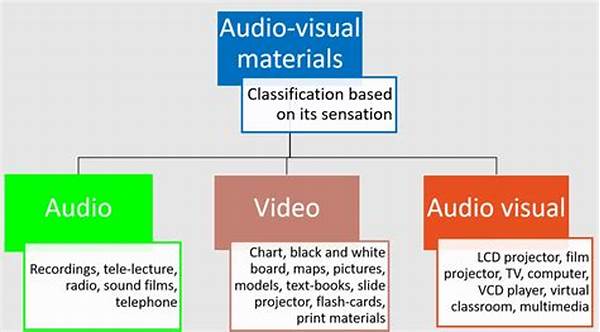Imagine a world where history isn’t just a subject filled with dates and dead kings but a vibrant tapestry of stories brought to life with captivating visuals and sounds. This magical transformation isn’t a figment of the imagination but an everyday reality with audiovisual media as the magic wand. Welcome to the realm where dragons storm castles, great empires rise and fall, and historical figures leap out from the pages of textbooks and into your living room screens.
Read More : Audio-visual Transparent Screens For Modern Retail Stores
Audiovisual media in education is the secret sauce that keeps the stew of history lessons from tasting stale. But why does it work? It taps into our innate love for stories and our senses’ hunger for stimulation. Teachers and educational institutions are adopting these colorful tools because they go beyond mere novelty—they leave lasting impressions. In an age where technology reigns supreme, gathering children’s attention demands a certain finesse. This toolset provides exactly that—a ticket to the past wrapped in visuals and sounds that demand attention and ignite interest.
The Power of Audiovisual Media in History Education
Multimedia Presentations
If a picture paints a thousand words, then multimedia presentations are the modern-day hieroglyphics telling tales of yore. Picture PowerPoint slides embellished with colorful maps, animated timelines, and snippets from historical documentaries. These presentations are more than just a classroom novelty; they serve as windows to the past, making the learning process engaging and interactive.
Research by educational psychologists suggests that students are more likely to retain information when exposed to visual and auditory stimuli. This translates into better exam performances and more robust class discussions. Multimedia presentations have set a new benchmark for innovative teaching methods, and yes, those improved grades also make the parents pretty happy.
Interactive History Simulations
Once exclusive to the realm of high-tech gaming, simulations now have a foot in the educational door, offering immersive experiences that captivate the minds of young learners. Imagine being a soldier in Napoleon’s army or a diplomat during the Roman Empire. Interactive simulations allow students to experience historical events in real-time, fostering empathy and understanding of the nuances behind each historical decision.
Virtual Reality (VR) Expeditions
Virtual Reality (VR) has recently evolved from a futuristic fantasy to an accessible classroom technology helping students stand in places like the ancient Colosseum or the bustling markets of ancient Baghdad. The real-world application and storytelling capabilities of VR make history lessons unforgettable, introducing students to different cultures and time periods in ways books simply can’t match.
Why Audiovisual Media Outshines Traditional Methods
Emotional Engagement
Emotions drive action, and audiovisual media evokes emotions that traditional methods can’t match. When kids hear the eerie tunes of medieval music or see the devastation of war broadcast in those heart-wrenching videos, they’re not just spectators—they become emotionally invested participants.
Knowledge Retention
Who knew watching a short video could help students remember critical events during World War II better than reading three chapters of a textbook? Several studies affirm that visual elements significantly boost retention rates because they’re easier to recall than plain text—a fact advertisers have used to their advantage for decades.
Read More : Tips Choosing An Audiovisual Power Amplifier For Stable Sound
Bridging Cultural Gaps
History is not just the story of our past; it is the shared legacy of humanity. Audiovisual media offers a lens through which students can explore different cultures, thereby cultivating a sense of shared human experience.
Features of Effective Audiovisual Tools
In the words of an elated history teacher who recently incorporated VR into her worldview lessons, “My students’ newfound enthusiasm for history is both touching and inspirational—it’s like they’ve been given a time machine!”
Implementing Audiovisual Media
Conclusion
Growing Through Experiences
Today’s learners crave engagement. Audiovisual media offers a dynamic way to learn from those who’ve gone before them, providing memorable and impactful lessons that truly resonate.
Broadening Horizons
The incorporation of audiovisual media in history lessons doesn’t just enhance classroom engagement; it builds bridges between past and present, lending a global perspective and a deeper understanding of cultural heritage.
Looking Ahead
In an increasingly digital world, children need to become adept at understanding and analyzing multimedia content. Embrace audiovisual tools, and unlock a future where history lessons are nothing short of legendary. Start a journey today that’s not just about reliving the past but shaping a future rich in knowledge and understanding.
